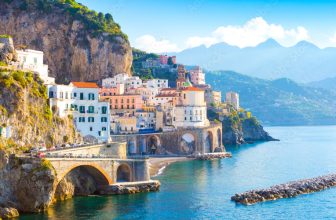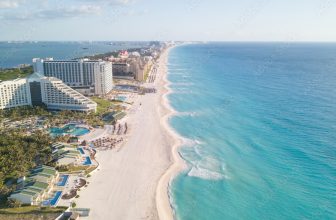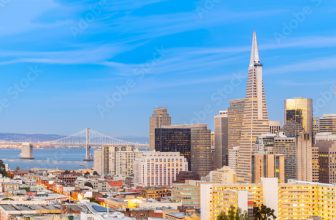
The metropolitan area of Tokyo is the most important commercial and industrial centre in Japan. In central Tokyo, many domestic and foreign financial institutions are headquartered. The city is also a significant wholesale centre. The Keihin Industrial Zone, which is centred on the western shore of Tokyo Bay, has developed into one of Japan’s leading manufacturing areas. Industries in the region are primarily labour-intensive and light. The city is home to a diverse population, with a strong emphasis on technology, innovation, and retail.
Harajuku
Youth fashion and colorful street art are two of the many draws to Harajuku in Tokyo. Several streets, including Omotesando Avenue and Takeshita Street, are teeming with vintage clothing stores. Small, hip bars and dessert shops line the surrounding laneways. Visiting the Watari Museum of Contemporary Art (Watari MOTA) is also a must. While you’re there, don’t miss the cutting-edge temporary exhibitions at the nearby Watari Museum of Contemporary Art.
One of the most famous parts of this district is Takeshita Dori, a bustling shopping street that is home to many unique shops. Meiji Shrine, located behind the station, is another popular tourist spot. Yoyogi Park is another popular destination and is full of vigor. You can spend hours in this district, browsing the many stores and cafes. If you’re into themed restaurants, don’t miss the Kawaii Monster Café.
Fashion isn’t the only draw of Harajuku, however. Hundreds of shops and boutiques line Omotesando Avenue. Be sure to stop by the Sukajyan Dept boutique for a souvenir jacket. Inside the store, you’ll find the works of Japanese designer Ken Kakinuma. Tokyu Plaza Omotesando Harajuku is a great place to buy designer clothes and accessories.
For a break from the bustle of Harajuku, stop by the Meiji-Jingu shrine. This shrine, devoted to the Meiji era royal family, is a peaceful oasis amidst the hectic streets of the district. Its towering Torii gates and peaceful atmosphere are perfect for restoring your spiritual energy. And if you can make it to the Meiji-Jingu shrine, you’ll be able to witness a traditional wedding ceremony, which is also an important symbol of Japanese culture.
Meiji Shrine
The Meiji Shrine in Shibuya, Tokyo, is a Shinto shrine dedicated to the deified spirits of Emperor Meiji and his Empress, shken. The shrine does not contain the emperor’s actual grave. His grave is located at Fushimi-momoyama, south of Kyoto. The shrine also houses a replica of his scepter. There are two entrances to the shrine, one in the city center and the other on a hillside.
The main building of the Meiji Shrine is open from sunrise to sunset. In the winter, it is open from 6am until 4:30 pm. The shrine also has a treasure house, known as the Homotsuden. Visitors can find personal items from the late Meiji Emperor as well as artwork from the Taisho and Showa eras. The shrine also often hosts special exhibitions. It is worth a visit if you’re in the area!
Meiji Shrine is located in a large forest of trees. Over 120,000 trees of 400 different species are located in this park. Donated by people from all over Japan, the Meiji Shrine forest is now a popular recreation area for the people of Tokyo. The forest is accessible through the Jingu Bashi bridge and is right next to Yoyogi Park. A stroll through the shrine is a great way to experience the serenity and tranquility of the area.
There are several reasons to visit Meiji Shrine in Tokyo. The shrine is beautiful year-round, but the summer months are best. The shaded inner garden provides a refreshing break from the hot, humid weather. Meiji Shrine also holds various annual events, including Hatsumode, the New Year celebration. Its popularity has soared to three million visitors in three days around New Year’s Eve. You won’t want to miss this beautiful shrine!
Senso-ji
The oldest Buddhist temple in Tokyo is the Sens-ji in Asakusa. It is considered to be one of the most important and oldest temples in Japan. This temple was associated with the Tendai sect, but became independent after World War II. You can visit Sens-ji, as well as other famous temples in Tokyo, in the early days after the war. Originally a place of worship for the Buddhist sect, it is now a popular tourist destination in Tokyo.
If you have a day to spare, you may also want to visit the temple’s main hall. It is open around the clock. The main hall is open daily from 6 a.m. to 5 p.m. and opens an hour earlier in October and March. The grounds of the temple are closed on Mondays, but the main hall is open to visitors. For those who are interested in learning more about the history of the temple, the ultimate guide to Sensoji in Tokyo is a must-read.
After you’ve visited the temple, head to the nearby Nakamise-dori to enjoy the traditional food of Japan. You can sample the delicious Japanese food served on this street, including kare pan and mince cutlet. Be sure to bring some cash to purchase some of the famous Kaminari-okoshi (puffed rice) that is sold on the street. These sweet bars are believed to bring good luck to those who eat them, making them a great souvenir.
Another highlight of visiting Sensoji is the nearby Asakusa Jinja. This shrine is dedicated to the three commoners who helped build the temple. The temple’s buildings survived WWII and are now Important Cultural Properties. Inside, people offer prayers and enshrine the gods and goddesses. Visitors are not allowed to ring the temple bell, but it’s a common custom to do so.
Ueno Park
If you are looking for a large and well-kept public park in Tait, Tokyo, you’ve probably come across Ueno Park. This public park was originally constructed on land that had previously belonged to a temple known as Kan’ei-ji. Today, the park is home to over one million visitors. It is a fantastic place to spend a day or an afternoon. Here are some things to do while in Ueno Park.
Visit the Toshogu shrine, which is located 4 minutes away from the Gojoten Jinja shrine. This seventeenth century shrine is famous for its gold-leafed historical buildings and its peony garden. You can also visit the Ueno Zoo, the Tokyo Bunka Kaikan, and the National Museum of Western Art. All three museums are free to enter, and they are well worth a visit. The zoo and museum are also located in the park.
In 1625, the area surrounding Ueno Park was a Buddhist temple complex. It also includes a Shinto shrine that honors the shogun Tokugawa. Because of the historical importance of this area, Tokugawa Ieyasu wanted to preserve it by building shrines and temples in certain locations. In 1868, fire destroyed most of the temple’s structures, but in 1873, the government decided to establish a public park in the park’s grounds.
The south end of Ueno Park has Shinobazu Pond, which represents Lake Biwako. In addition to lotus flowers, the pond is home to cormorants and ducks. On Bentenjima Island, you can visit the Bentendo Temple, which is another of the surviving buildings of the Kaneiji Temple. The museum is a great place to learn about the history of the Japanese nation.






